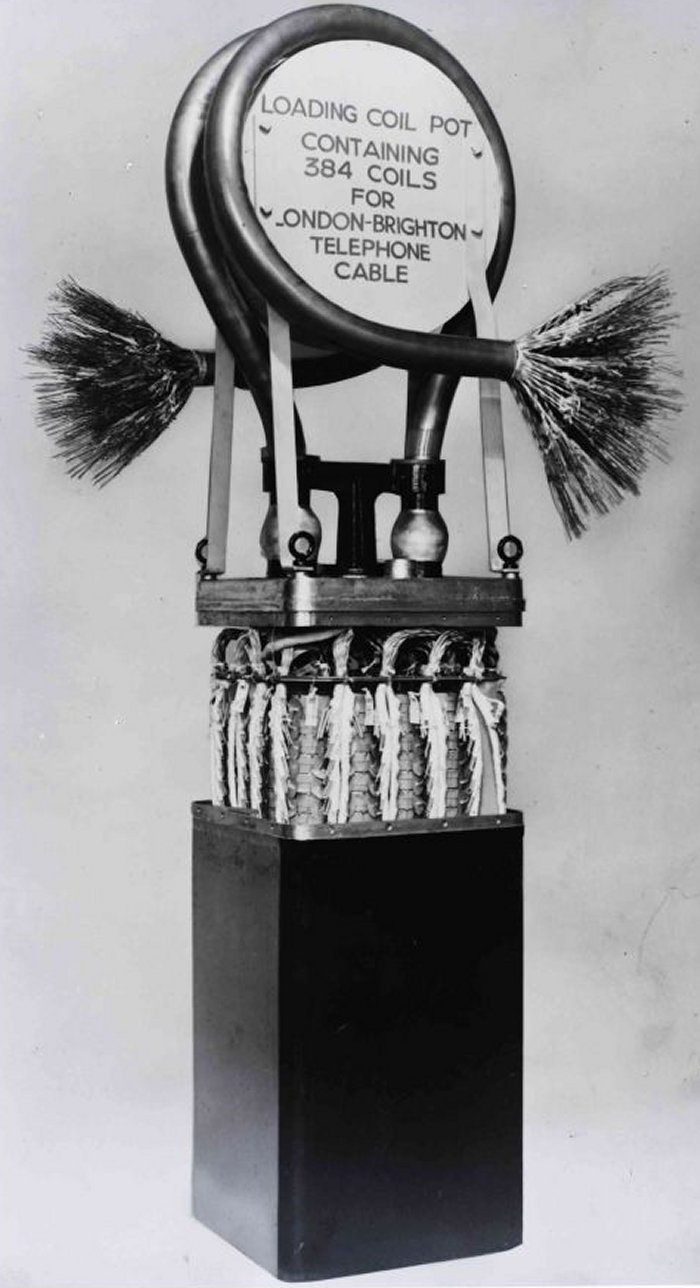UNDERGROUND CONSTRUCTION
| ||||||||
|
In the early days of telephony, most wiring was overhead, but as demand increased it became obvious that the number of circuits which could be carried by poles was insufficient. It was therefore considered that a multi-wire cable could replace overhead wiring, but this meant that the wires would have to be smaller and placed close to each other. This produced two difficulties, those being the increased ohmic resistance and mutual capacity of each circuit. These unfortunately decreased the distance over which speech could be transmitted, both the volume and clearness being adversely affected. But, in 1887 Heavyside showed that distributed inductance in the cable line would increase the volume of sound for a given length or increasing the distance of transmission for equal volumes. In other words, inductance reduced the attenuation and intelligibility was much improved, because the distortion was materially reduced. The outcome of investigations by Professor Pupin, in 1900, paved the way for cables to have inductance coils inserted at regular intervals. This was called loading and the inductance coils were called loading coils. These coils are effectively a ring of powered magnetic material (Permalloy) with two windings. This coils are then enclosed in a metal can. The coils are then fitted inside special cast iron containers known as loading pots. The coils are connected to cable tails and then the post is sealed. The pot is then installed either on a pole or in a manhole and connected to the Main cable, as loading is only used on long distance routes. Loading coils could also be fitted within joints that had a special holder, but only a few could be fitted due to lack of space. The values chosen at each insertion point is worked out in advance depending on the number of insertion points, cable type and length of cabling. Click here for a description of Loading Pots
Typical loading coil
Loading Pot
Three Loading Posts situated in a manhole
|
||||||||
Last revised: April 18, 2023FM2 | ||||||||


